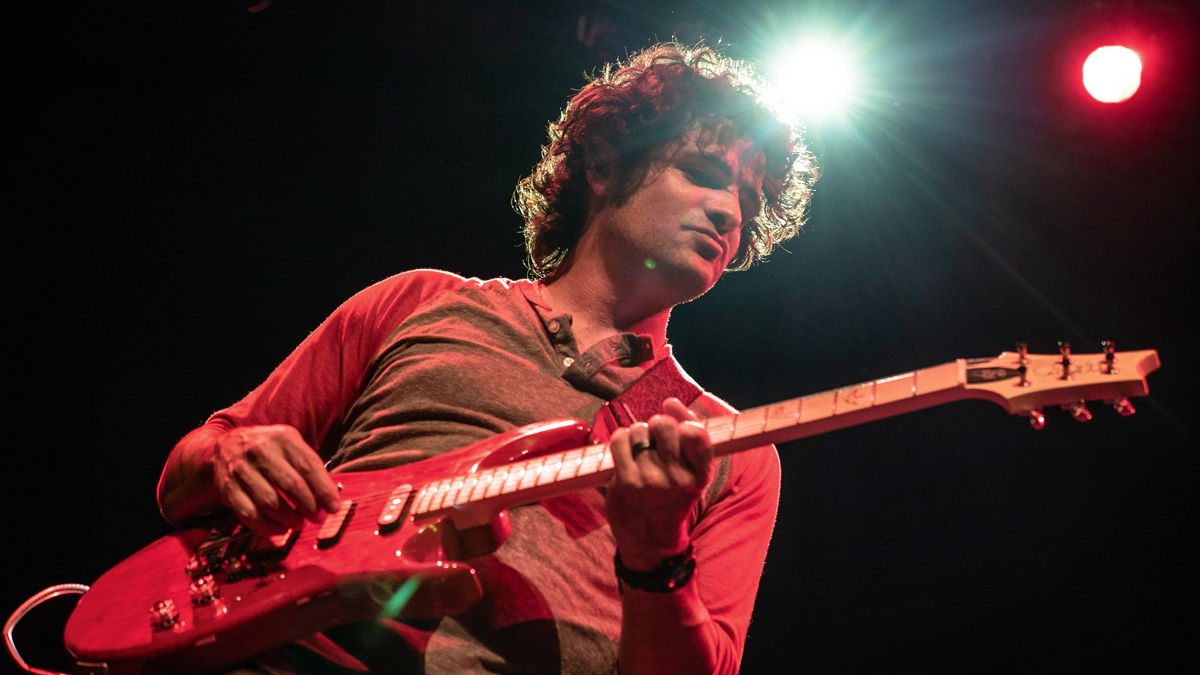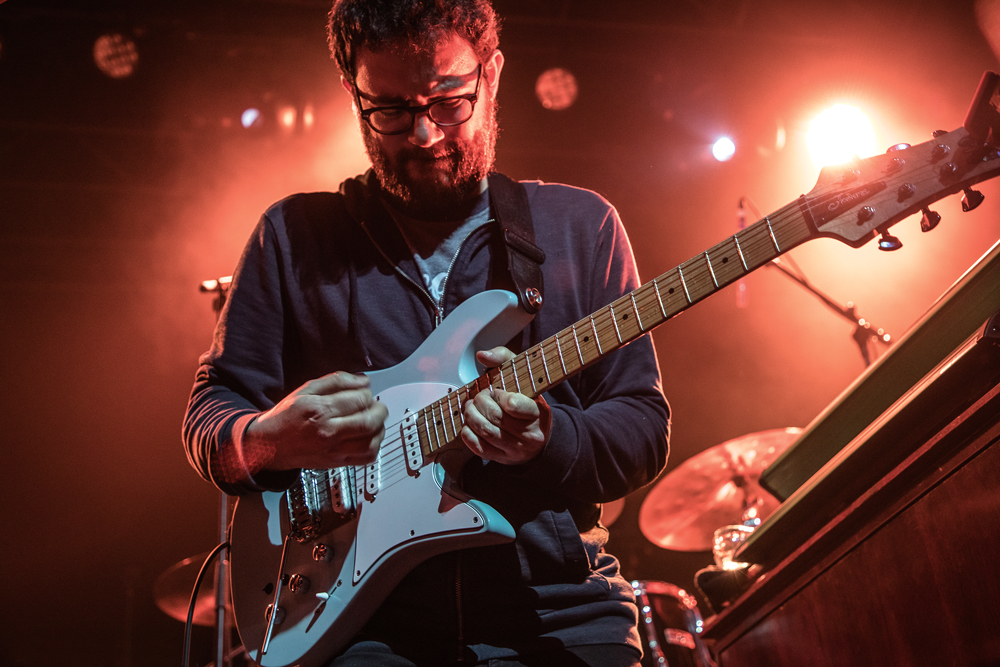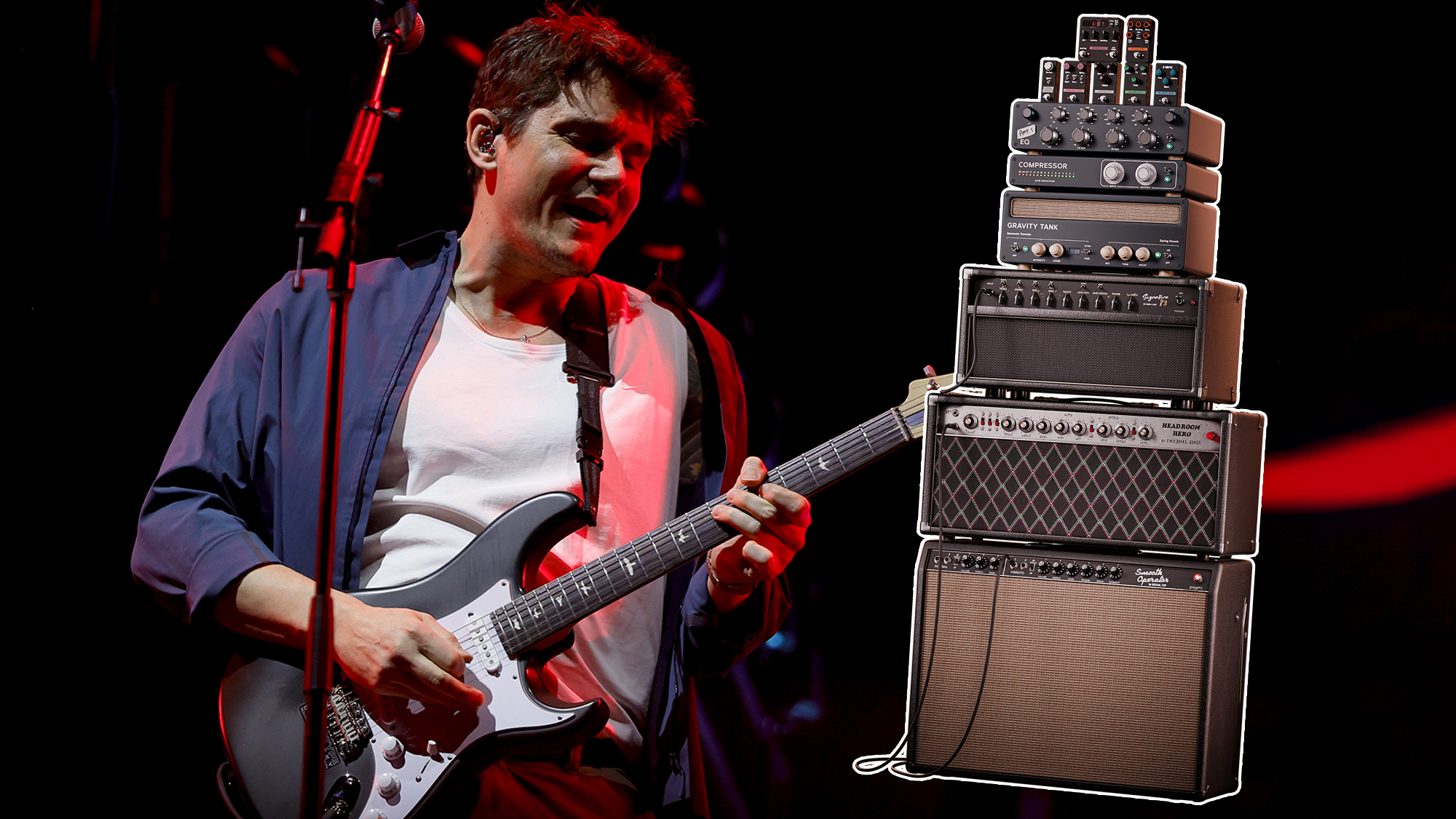Mark Lettieri, Chris McQueen and Bob Lanzetti on Snarky Puppy’s unlikely success story, and the true heart of their unique jazz-funk sound
Following the release of Empire Central, the three session heavyweights unpick the band's ruthless gigging pedigree, their individual axe choices and how a viral hit helped propel them to stardom

Snarky Puppy could only be a 21st century band. It’s not that the music couldn’t have been done before then; it’s just tough to think of them getting anywhere in the age before social media.
Imagine trying to sell them to a record company: “They play jazz and funk-influenced music with lots of improvisation. There’s no singer, and none of their songs are short enough to play on the radio. Oh, and there are 25 of them, but don’t worry – they don’t all play at every gig.” Despite all the above, this band has just completed a UK tour crowned by a headlining date at London’s Wembley Arena.
Pretty much everything about Snarky Puppy is unconventional. The band’s fluid lineup currently includes three gifted guitarists, with Chris McQueen and Mark Lettieri featuring alongside founding member Bob Lanzetti – all of whom appear on the new album Empire Central. But for live performances, only one guitarist is utilized on any given night, and on that recent UK run it was Lettieri.
All three guitarists speak to Total Guitar about how they operate together within this most unorthodox of groups. Each have their own take on the creation of Empire Central, but Chris McQueen speaks for all of them when he describes what it is that makes Snarky Puppy a band you just have to experience live.
As he says: “My wife would tell me, ‘I don’t totally get it, but then when I come to see the band live I really do get it, because then you see the interactions.’ You can tell how genuine it is. Someone will play something that surprises someone else in the band, they make a face and everyone is in on a joke. Even as a non-musician you can understand it.”
Snarky Puppy mainly got where they are through relentless gigging at the behest of bassist and bandleader Michael League. As McQueen puts it: “Mike had the intuition that this band needed to tour nonstop. What was magical about the band happened while we were playing, whether we were playing in front of 50 people or two people, which was generally the range for the first several years!”
With so many members, the Puppies were able to run a flexible lineup. Musicians regularly dropped in and out for better paying gigs – they all have enviable session CVs – allowing Snarky Puppy to remain a passion project.
All the latest guitar news, interviews, lessons, reviews, deals and more, direct to your inbox!
They also happened to hit YouTube at exactly the right time. “We had an early viral success with Thing Of Gold,” McQueen says. Lanzetti concurs: “That was a game-changer.”
The hooks have a pop appeal to them even if they are over an advanced set of changes. We want to be fulfilled as musicians but we also want to reach people
Mark Lettieri
One reason Snarky Puppy have been so improbably successful is that they are, in many ways, a pop band. “You hear it once and you’ve got it memorized,” Lettieri says. “The hooks have a pop appeal to them even if they are over an advanced set of changes. We want to be fulfilled as musicians but we also want to reach people.”
That desire is most evident on Empire Central, which contains some of the most direct and funky music Snarky Puppy have ever released. It was recorded, like several of their albums, in front of a live audience.
Snarky hooks are often unison melodies that many instruments, or even the whole band, play together. For those sections the guitarists often all play the same thing, sometimes in octaves. Trinity, the first single from Empire Central, sees all three grinding out the dirty funk main riff. The rest of the time, however, things get more complex.
Given that many bands struggle to write two complementary guitar parts, writing three to fit alongside horns and multiple keyboard players is a feat. Lanzetti, who’s been doing it the longest, explains: “If one guy is playing syncopated funky stuff, someone else might play long chords. If someone’s playing down low, someone else might play higher funky chords. It’s about making sure each part’s not being covered up, trying to create a balance.”
Each guitarist has their own specialty. With his long hair, high-gain lead sound and Ferrari red signature PRS, Lettieri is the most conventional ‘guitar hero’ of the three, citing Hendrix and Satriani as early influences. Lanzetti, meanwhile, specializes in more ambient tones: “I do a lot of textural things with delay and volume pedals and reverb,” he says. “I have a lot of influences that are not guitar-based, like a lot of 20th century classical music, so I think some of that comes out.”

McQueen earned his stripes with indie rock bands, and he brings that energy to Snarky Puppy. “If it’s a little more raw or hard-hitting, then maybe that would be something I would do,” he summarizes. But, like Snarky Puppy as an ensemble, all three are diverse musicians that refuse to be pigeonholed: McQueen has an acoustic duo and musical theater experience, Lanzetti is a prolific jazzer, and Lettieri’s session credits include 50 Cent, Erykah Badu, and Snoop Dogg.
Such diverse music calls for a diverse palate of sounds, and all three guitarists run their amps clean as pedal platforms. For Empire Central, every amp was a Kemper and every musician wore headphones to allow the cleanest mix. Lanzetti used a Fender Bandmaster profile, while Lettieri used a profile of his own Naylor Dual 60 and McQueen profiled an amp built by Doug Sewell, now senior amp designer for Paul Reed Smith.
Pedalboards are essential for all three, but perhaps surprisingly there’s no MIDI switching involved. For Lettieri, improvising with pedal combinations is all part of improvising the music: “I need to be able to combine stuff and not worry about being stuck in a preset,” he says. “The band is shifting tonalities all the time when we’re improvising and I don’t like feeling stuck.
"There are certain things that I use the same sound for every night but other times it’s like, ‘Last night I used an envelope filter here, maybe tonight I’m gonna use an octave fuzz.’ The band really responds to that. If people start falling into patterns and ruts in this group, they’ll let you know!”
Playing in such busy arrangements, the musicians have to be wary of taking up too much space. “If you have a lot of reverb and delay or ambient sounds, there better be a place in the song for it,” Lettieri observes.
“That’s a great point,” says Lanzetti, who specializes in those tones. “I like to use them as really intentional effects rather than just keeping them on all the time. I try and think, ‘What am I actually trying to achieve?’ Live it really depends on the room. Some rooms are really boomy and I just don’t use reverb at all.”
For drive, J. Rockett pedals feature strongly. Lettieri has a signature Melody overdrive pedal, which has a 6-band graphic EQ rather than a tone knob, while McQueen and Lanzetti both use the Archer as their main drive.
Their approaches are very similar, both using Wingman knobs to adjust settings with their feet while they are playing. “I leave the Archer on all the time because I like the way it colors the tone, and then I’ll just put the drive up or down depending on what I want for a particular section,” Lanzetti explains. “I also have a Tube Screamer that I’ll use with that sometimes to push it over the edge.”

Axe-wise, none of their guitars are strictly conventional. McQueen’s main instrument is a Moollon thinline T-style guitar with twin humbuckers and a tremolo; he also uses a single-cut Moollon he describes as “kind of like a Les Paul but not as thickly saturated.” Lanzetti, in comparison, reveals his signature Fodera is modeled after his favorite Tokai Strat copy, but that is somewhat underselling it.
Although it has an S-style construction, the body shape is unique: the bridge pickup is not angled but mounted on a metal plate, Tele-style, with screw pole pieces that give a tone closer to a P-90. Elsewhere, the middle pickup is angled for a sharper sound on the treble strings, with two mini toggles functioning as a killswitch and a control to turn on all three pickups at once for a truly versatile instrument.
Lettieri’s signature PRS, the Fiore, dropped in 2021. With a bolt-on construction, 25.5” scale and HSS pickup configuration, it continues PRS’s march into Strat territory that first began with John Mayer's Silver Sky. “Designing a guitar during the pandemic was pretty hard,” admits Lettieri. “A lot of Fedex-ing boxes back and forth after we changed pickups or neck shapes or bridge style, or spacing of this or that. I learned a lot about how to make a guitar.”

At Lettieri’s insistence, it features PRS’ first two-point tremolo. “At its very core, it’s like, ‘This is what an electric guitar sounds like.’ It’s that sound – the single-coil pickups and a humbucker in the bridge just because that’s the sound of rock 'n' roll to me.”
The level of improvisation is such that no two Snarky shows are alike, and that goes double when the guitarist changes from show to show. McQueen, for example, gets sounds that are not necessarily guitar-like: “I mess with my tone knobs and pedals to get swollen synthesizer sounds. I listen to other instruments just as often as I listen to guitars. I feel like I’ve got all of that into my playing. After that I got obsessed with synthesizer and I incorporated that into my pedal thinking.”
My dream was to be in a band like Guns N’ Roses, so this is a dream come true. I’m just playing slightly more complicated chord voicings than them
Mark Lettieri
The success of Snarky Puppy is simply explained by Lettieri. “The songs are good,” he says. “There’s a lot going on, but it’s not so dense that it gets lost in an arena. My dream was to be in a band like Guns N’ Roses, so this is a dream come true. I’m just playing slightly more complicated chord voicings than them!”
- Empire Central is out now.
Jenna writes for Total Guitar and Guitar World, and is the former classic rock columnist for Guitar Techniques. She studied with Guthrie Govan at BIMM, and has taught guitar for 15 years. She's toured in 10 countries and played on a Top 10 album (in Sweden).

